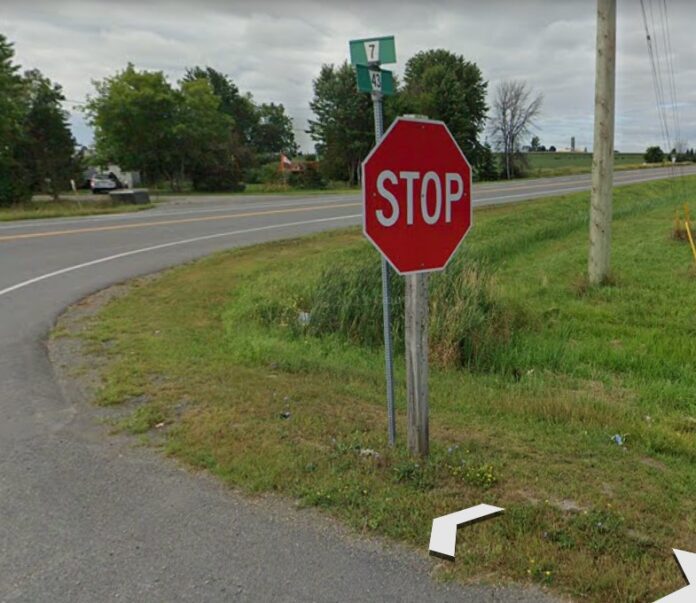by Brandon Mayer, Local Journalism Initiative Reporter
It seems that many local small towns have at least one intersection that is notorious for frequent accidents and fatalities, and Chesterville is no exception. At the intersection of County Roads 43 and 7, on the southern boundary of the town, a flashing red light warns drivers approaching from the north and south to stop, while a yellow light warns east and west travelers to be alert.
However, 17 times since 2013, these lights have not been enough to prevent a major collision, and, in one case in 2015, a motorcyclist was killed in one of these collisions. These statistics only point to collisions deemed “major”, and, in fact, there have been dozens more. The United Counties of Stormont, Dundas, and Glengarry bears responsibility for the county road system in SD&G, including the deadly intersection in Chesterville. At a meeting in January, the Counties agreed to spend between $5,000 and $10,000 to have an independent study of the intersection conducted, hopefully to improve safety at the location.
But safety measures often look different from location to location. Such measures are based on traffic flows, visibility restrictions, and many other factors. Those who have left Chesterville going south on County Road 7 will undoubtedly have felt and heard the jarring sound and vibrations from their tires meeting ridges shaped into the asphalt roadway, shortly before approaching the stop sign. The purpose of these ridges – which were installed several years ago – is, of course, to startle drivers to attention, so they don’t miss the upcoming intersection, but this cannot prevent collisions for other reasons, such as drivers not being able to see oncoming cars due to glaring sunlight.
To the west of North Dundas, at the intersection of County Road 43 and South Gower Drive, near Kemptville, repeated collisions have ultimately led to a decision to install a roundabout. Roundabouts are proven to be among the safest types of intersections, but they are costly. A recent Standard Freeholder article points out that the speed limit through Chesterville’s intersection remains 80km/h, while to the east, in Avonmore, a similar intersection, with just as few residences along the roadway, has a lower 60km/h limit. Talks among Avonmore locals at the time the speed limit was reduced (over a decade ago) credited multi-generational resident, Murray Barkley, for suggesting this change after a four-way stop sign was not deemed to be appropriate. Perhaps the voices of a few similarly-minded Chesterville residents could spark the first positive changes for Chesterville’s own “notorious corner”.




